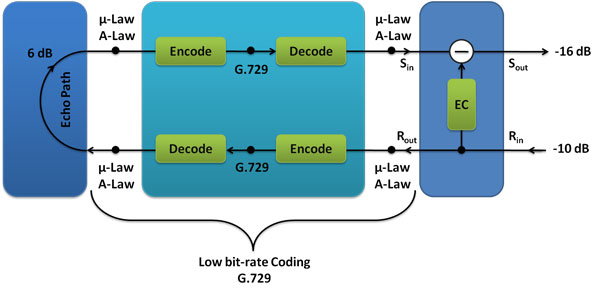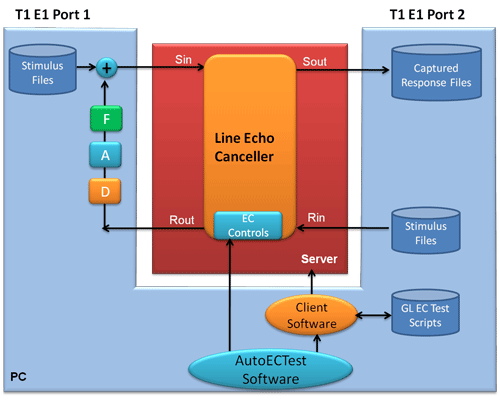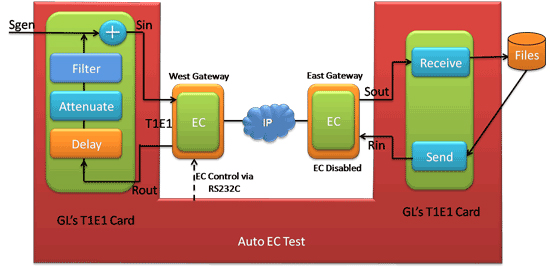Newsletter: Echo Canceller Compliance Testing
Welcome to another April 2011 issue of GL Communications' Newsletter providing information and insight into our enhanced Echo Canceller Compliance Testing software - a tool to perform echo cancellation compliance testing automatically per ITU G.168 specification.

Overview
Echo is annoying. It distorts intelligibility. Unfortunately, it happens in telephone networks, whether in the old PSTN, or in new Mobile and VoIP networks. Echo tolerance is a function of delay - the more delay in the network, the more annoying the echo. It became a major problem with the introduction of satellite voice networks in the late 70's and 80's. Equipment manufacturers were addressing echo thru echo suppressors and newly developed echo cancellers. At that time, the CCITT (now called ITU), began a standardization effort to specify the performance and testing of echo cancellers under the spec name "G.165". It has since been superseded by G.168.
In the last 12 years, ITU-T G.168 has undergone many revisions with greater and greater detail and specificity. The latest version of G.168 is G.168 (2009). GL has been keeping up with the improved standards. Currently there are 16 major tests with each test having many subtests: The complete tests are listed here:
Echo cancellers are sophisticated signal processing devices. Since the echo is somewhat a replica of the original signal in the opposite direction, the EC attempts to subtract a "scaled" version of the replica thereby eliminating the echo. There are many subtleties to the EC process. For example, it should converge quickly, operate in the presence of double talk, work for long or short delays, work for a broad range of signal levels, etc. As Mobile and VoIP networks are also subject to echo, tests have been incorporated for these as well.
New Echo Canceller Tests Added
ITU G.168 (2009) introduced three new tests to its repertoire. They are:
- Test 12 - Residual Acoustic Echo Test - Many calls these days involve both handsets and speakerphones, hence the need to test in the presence of acoustic echo in combination with line echo. This is NOT a test of acoustic echo cancellation, but a test to ensure that line echo cancellation is not distorted by the presence of acoustic echo.
- Test 13 - Performance with ITU-T Low Bit Rate Coders in Echo Path (Optional) - The prevalence of low bit rate codecs in mobile and VoIP networks presents the possibility that such paths may exist in the echo path. In this test ECs are tested to ensure that any degradation is within limits.
- Test 16 - DTMF Transparency Test -Generally DTMF digits are present on local loops, but it is possible that a Gateway or an Interactive Voice Response (IVR) system may also require them. In such cases, ECs, should not degrade the transmission of DTMF digits any more than without ECs.

The above tests have been incorporated into the latest release of GL's AutoECTest Software, a program that permits automatic testing of the full complement of G.168 tests using GL's T1 E1 Analyzer products.
Since these tests and others require varying levels of input signals, echo models, delays, and other parameters, the permutations of tests becomes enormous and manual testing a virtual impossibility. AutoECTest, however, simplifies the process by allowing the user to input all the variations desired. Literally thousands of tests can be run overnight or over the weekend. The software is used by most all Echo Canceller (EC) manufacturers to simplify the compliance testing of ECs. The general architecture of automated EC testing is shown below.

Testing Line Echo Cancellers Directly
The software can also be used to test ECs in Gateways as shown below.

Testing ECs in Gateways
 Back to Latest News Page
Back to Latest News Page